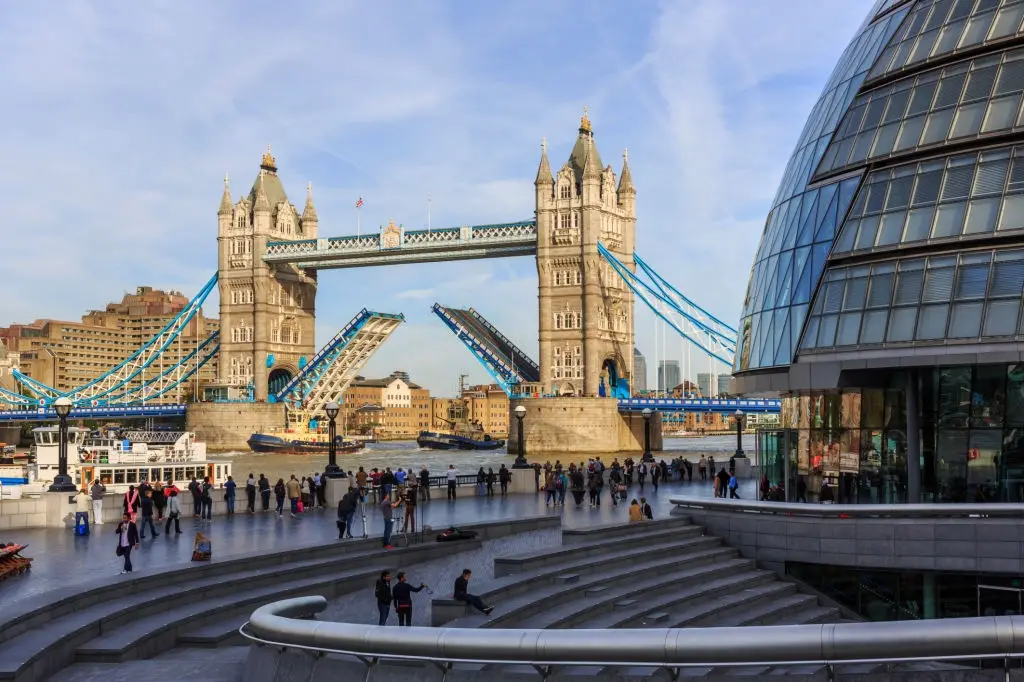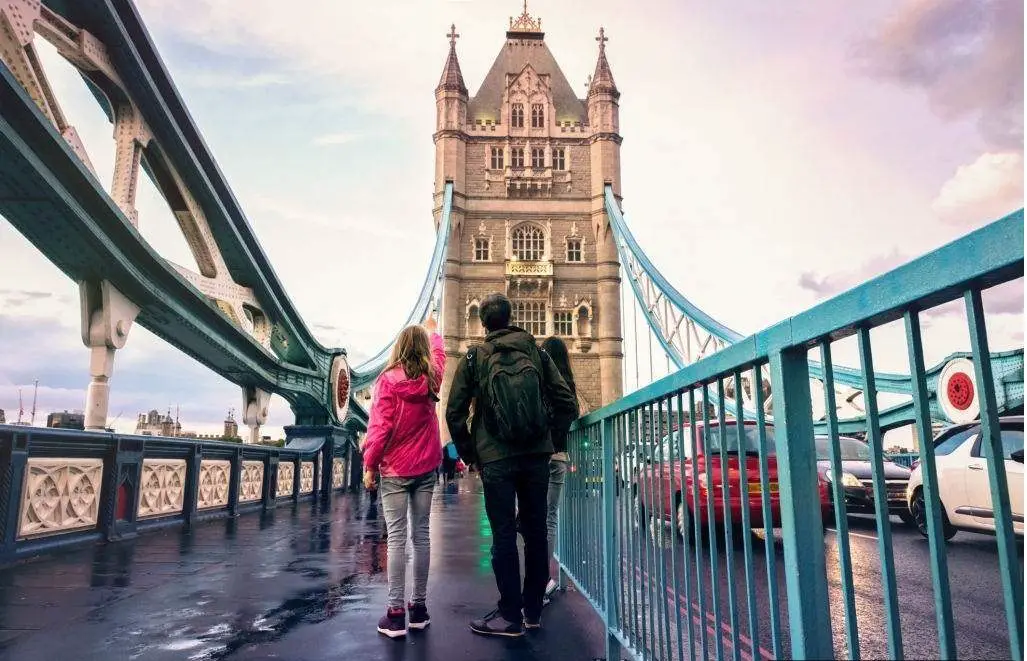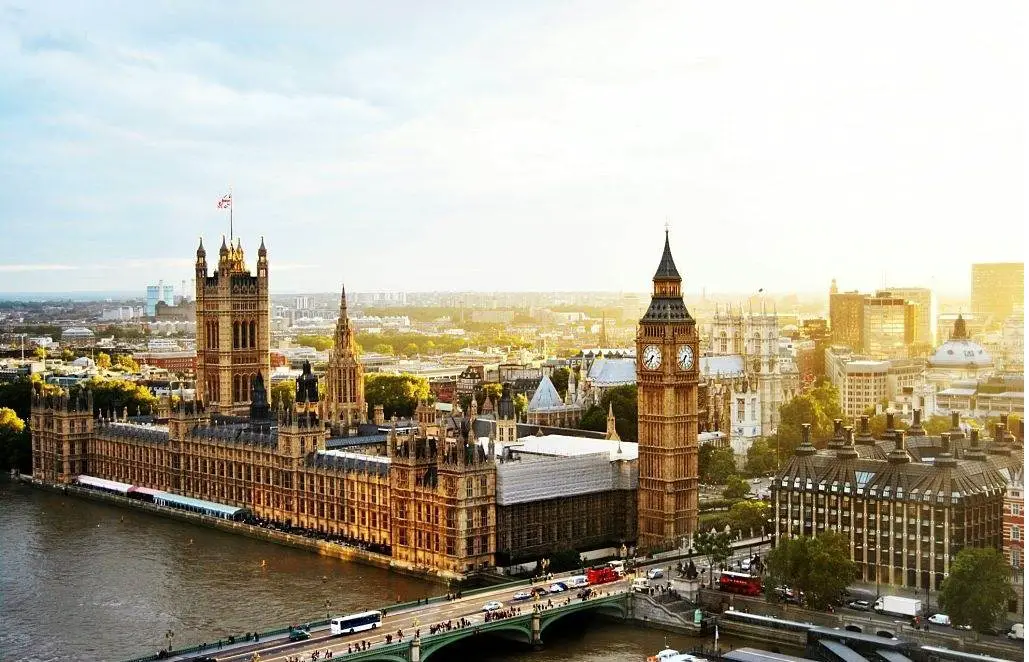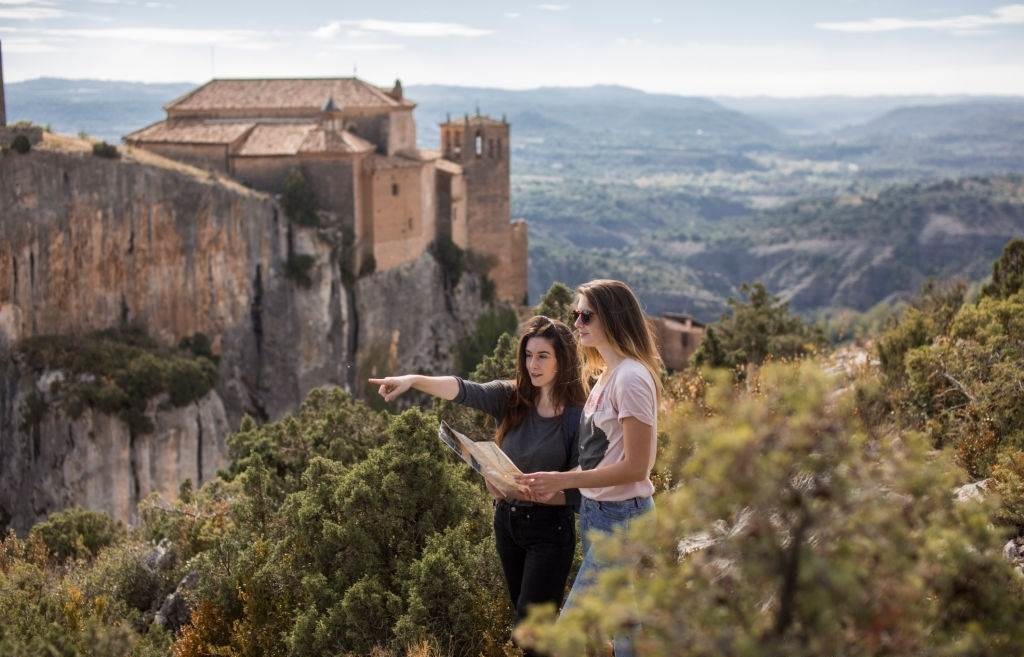Ask a local driver about the “animal valley” and they will veer toward Devrent Valley, a five-kilometre ribbon of rose-tinted tuff running between the towns of Avanos and Ürgüp. Unlike neighbouring Pasabag, Devrent Valley was never a monastic refuge; instead, its claim to fame is whimsy.
Wind and rain have sculpted scores of fairy chimneys that resemble camels, seals, dolphins, even a robed Napoléon if you squint hard enough. Because these shapes trigger the imagination, tour guides long ago nick-named the gorge “Imagination Valley,” a label that stuck on signposts and souvenir mugs alike.
How Devrent Valley’s Fairy Chimneys Formed
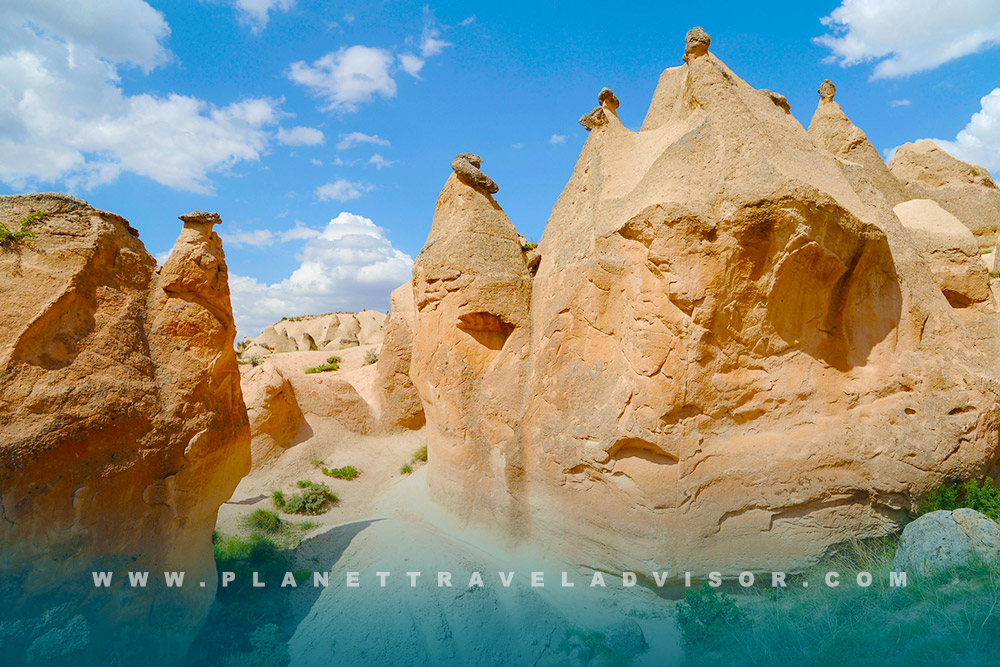
Like every hoodoo in central Anatolia, the pillars of Devrent Valley began as volcanic ash hurled sky-high by Mount Erciyes, Mount Hasan, and Güllü Dağ millions of years ago. That ash compacted into soft, beige-pink tuff, capped here and there by harder basalt. Over millennia, Cappadocia’s searing summers, freezing winters, and sporadic flash floods gnawed away at the delicate tuff, leaving the cap-protected cores standing proud. The result is a natural sculpture garden whose forms seem almost deliberate, proof that erosion can be a playful artist.
Why the Rocks Look Like Animals
The “camel” that greets visitors beside the Avanos–Ürgüp road stands about two storeys tall, its neck and head protected by a slim capstone. A few strides away, a penguin-shaped hoodoo huddles beside what many swear is a squid. These illusions occur because Devrent Valley’s tuff contains thin seams of harder lava that erode at different speeds, creating bumps, ledges, and profiles perfect for pareidolia. Most shapes reveal themselves best at a distance: step back, half-close your eye, and the menagerie comes alive.
Planning Your Devrent Valley Visit
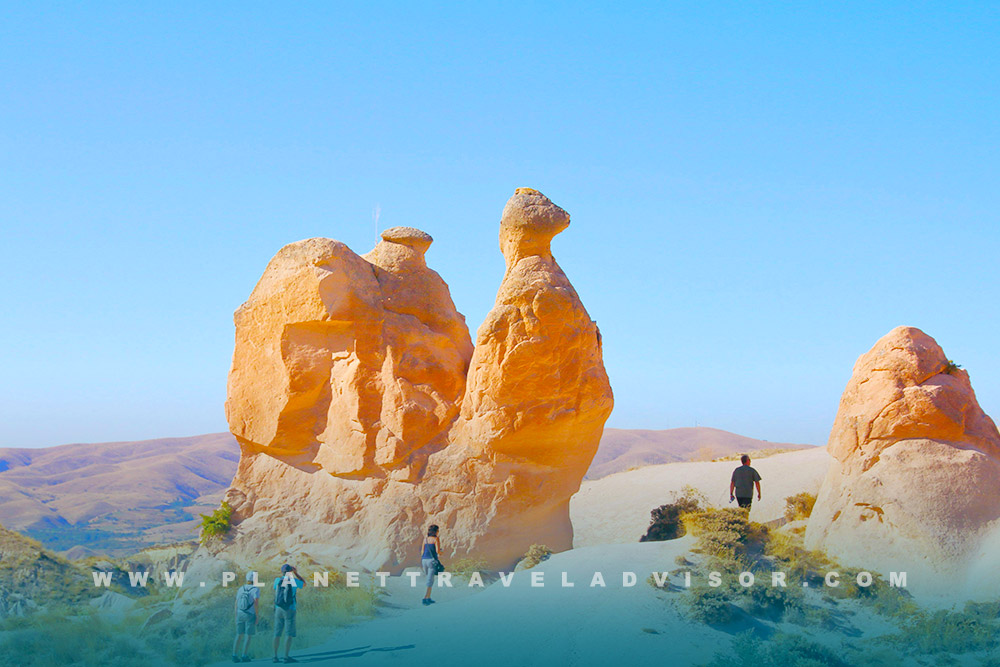
Location and Orientation
Devrent Valley straddles the D302 country road roughly nine kilometres north-east of Göreme and five kilometres south-west of Avanos. Look for the brown “Devrent Vadisi / İmagination Valley” sign; a gravel pull-out on the south side of the asphalt marks the informal car park. From there, a sandy footpath meanders into the main ravine while a parallel crest trail offers bird’s-eye views toward Zelve and Pasabag. The entire core section measures less than one square kilometre, small enough to explore in an hour, roomy enough to lose the crowds if you wander beyond the first bend.
Getting There
- Rental car: The simplest option for independent travellers; Göreme-to-Devrent takes about fifteen minutes. Two dusty lay-bys fill quickly after 10 a.m.
- Dolmuş (minibus): Hourly Urgüp–Avanos buses stop on request at Devrent; have small change ready for the ₺30–₺40 fare.
- Red Tour: Virtually every “North Cappadocia” day tour pauses here for thirty minutes, pairing the stop with Pasabag, Zelve, and Avanos pottery studios. Expect prices of €50–€80 including lunch.
- Taxis and private transfers: Handy for sunrise or sunset when public transport is sparse; negotiate a round trip from Göreme for about ₺800–₺1100, waiting time included.
Opening Hours and Entrance Fees
Devrent Valley has no gate, no turnstile, and, at the time of writing, no official closing time. You can wander in at dawn to watch balloons drift overhead or linger long after sunset to photograph violet skies. Better still, admission is free, a rarity in Cappadocia where most sites charge or require a Museum Pass.
Choosing the Best Time to Explore the Devrent Valley
Because the valley sits on an open saddle, it receives full sun and very little shade. Spring (April–May) and autumn (September–October) offer the gentlest conditions: daytime highs hover between 15 °C and 25 °C, and the rocks blush pink under crisp, pollen-scrubbed light.
Summer sees thermometer spikes above 37 °C; aim for early morning or late afternoon walks and tote at least one litre of water. Winter can dust the chimneys in snow, transforming camel rock into an Arctic dromedary, magical, but expect icy paths and temperatures well below freezing before 10 a.m.
What to See and Do in Devrent Valley
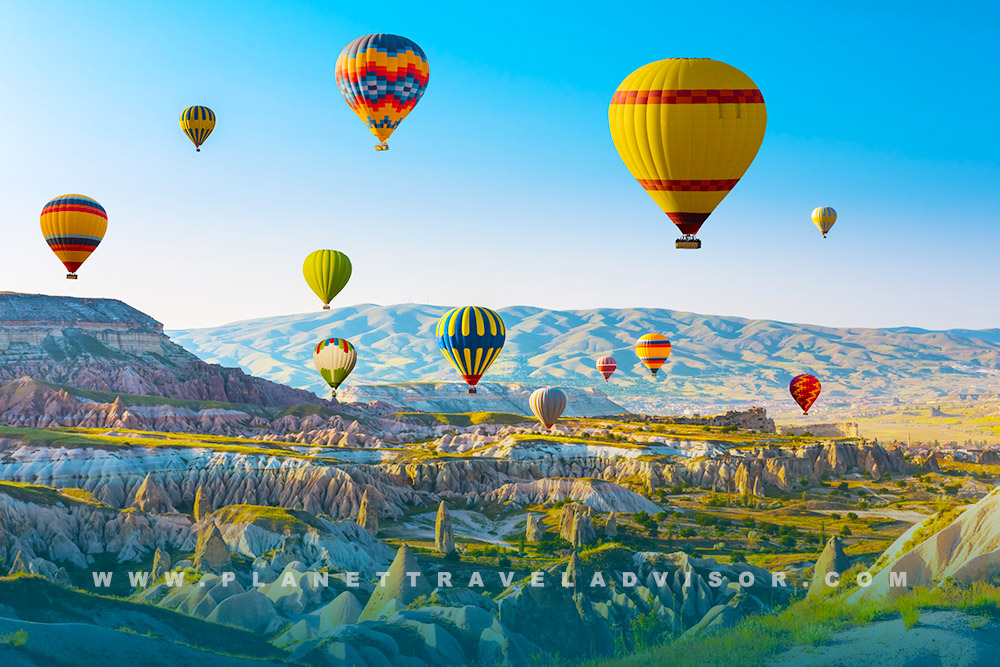
1. Signature Formations You Shouldn’t Miss
- Camel Rock: The unofficial mascot, fenced off to prevent climbing yet still photogenic from every angle. Local vendors sometimes offer scarves so visitors can “saddle” the camel in photos.
- The Seal and Dolphin: Mid-valley spires whose sinuous heads jut from a shared tuff outcrop, look east when the path first dips into the ravine.
- Napoléon’s Head: A bulbous cap perched on a slanted neck that, in the right light, resembles a bicorne hat.
- Rock Ballet: Near the southern ridge, two slender pillars lean toward one another like dancers frozen mid-pirouette, a favourite silhouette for wedding shoots.
2. Short Walks and Mini-Hikes
The main footpath, soft sand spliced by occasional rocky steps, loops through the valley floor in roughly forty minutes. If you have sturdier shoes, climb the left-hand ridge for a panoramic spine trail that runs north-south. The crest walk adds thirty minutes but rewards hikers with sweeping views of Pasabag’s tripod chimneys and the Zelve pinnacles glowing copper in late afternoon light. Remember that Devrent Valley lies outside the patrolled zones of Göreme National Park; rescue services are minimal, so tread with common sense.
3. Photography Tips
Early morning sun strikes the formations side-on, carving dramatic shadows that accentuate animal silhouettes. Late afternoon (two hours before sunset) paints the red tuff peach and salmon, prime time for camel rock portraits. A polarising filter helps cut glare off pale tuff, while a mid-range zoom (24–105 mm) lets you frame individual chimneys without lugging heavy glass. Tripods are allowed, but place legs on bare rock or packed earth to protect the valley’s fragile microflora.
4. Balloon-Spotting from Devrent Valley
Although hot-air balloons rarely launch directly above Devrent Valley, prevailing dawn winds often sweep them along the Avanos–Göreme corridor. On still mornings, you might witness thirty or more colourful envelopes drifting behind Camel Rock, an angle far less crowded than the Göreme viewpoints.
Where to Stay for Easy Access to the Devrent Valley
Most travellers base themselves in Göreme’s bustling cave hotels, but sleeping in Avanos has perks: sunrise over the Kızılırmak, quieter lanes, and a ten-minute hop to Devrent. Budget guest-houses start around €35 in low season; atmospheric cave suites in Göreme or Ürgüp range from €90 to €160, with winter discounts of up to 40 % when balloon demand dips.
Nearby Highlights to Combine with Devrent Valley
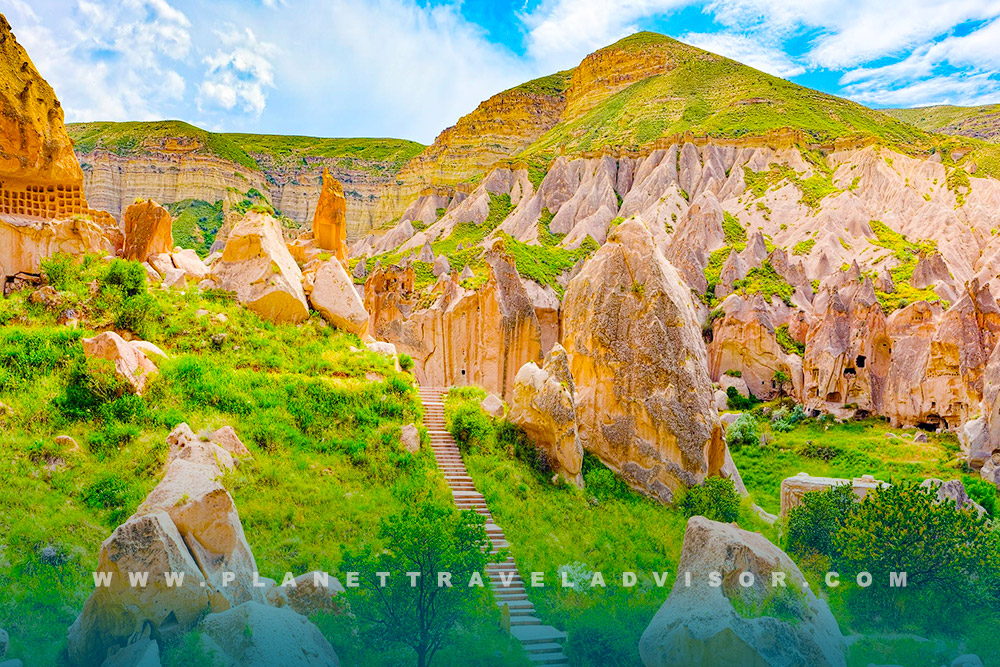
Because Devrent sits on the classic “Red Route,” combining it with other north Cappadocia gems is effortless. Four kilometres east lies Pasabag Valley, home to triple-capped fairy chimneys; two kilometres further, the abandoned cave hamlet of Zelve beckons with ghostly troglodyte streets. Ten minutes north, Avanos offers pottery workshops along the Kızılırmak River, while Göreme and its frescoed churches wait fifteen minutes west.
Final Thoughts on Devrent Valley
Cappadocia brims with valleys layered in history, hidden frescoes, hermit caves, and crusader graffiti. Devrent Valley offers something simpler yet equally enchanting: the chance to let your mind wander among nature’s own Rorschach inkblots. Pause before camel rock, trace the curve of a stone dolphin against the sky, and you may feel geology blur into daydream. Visit respectfully, tread lightly, and you will leave Devrent Valley with a deeper appreciation of erosion’s quiet exuberance, and with a playful spark that lingers long after the tuff dust has left your shoes.
Experience the magic of our expertly curated Turkey trips, where every detail, from fast-track access to top landmarks to boutique accommodations and insightful local guides, is tailored for meaningful discovery. Book this week to unlock exclusive seasonal offers and limited spring and autumn departures. Discover Istanbul, Ephesus, and Cappadocia in comfort and style.


